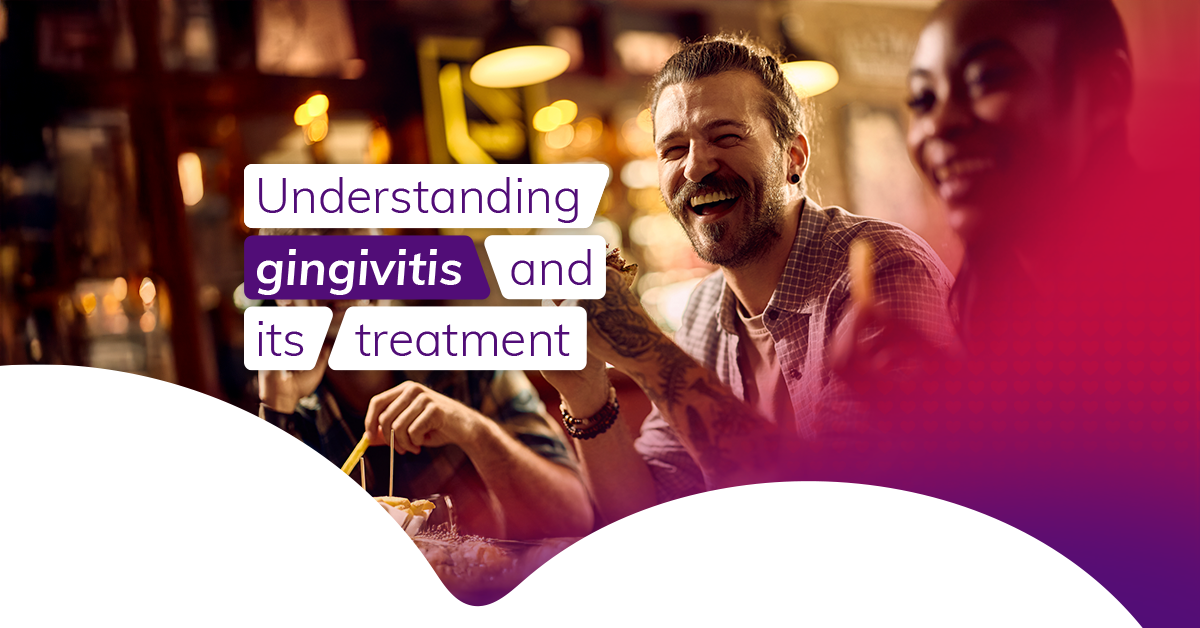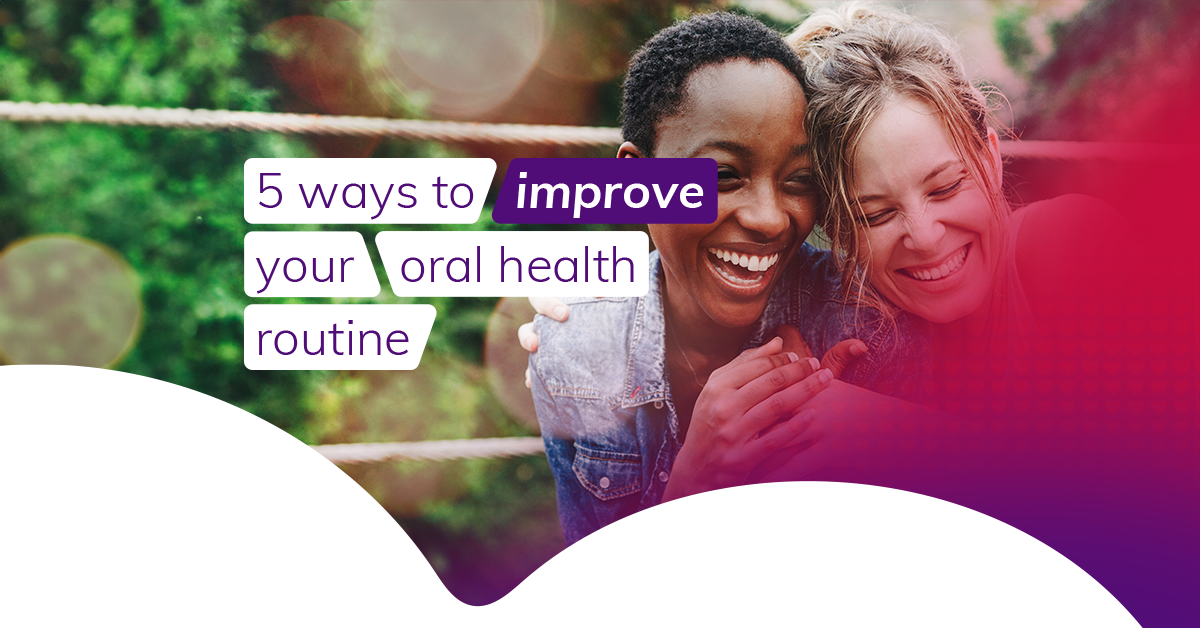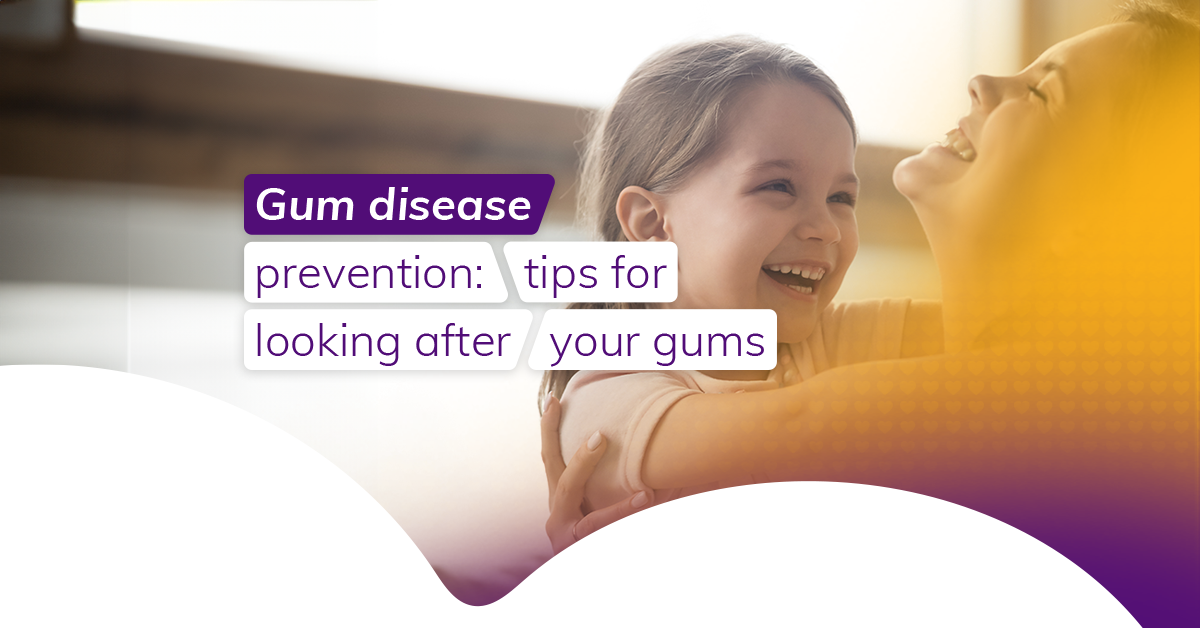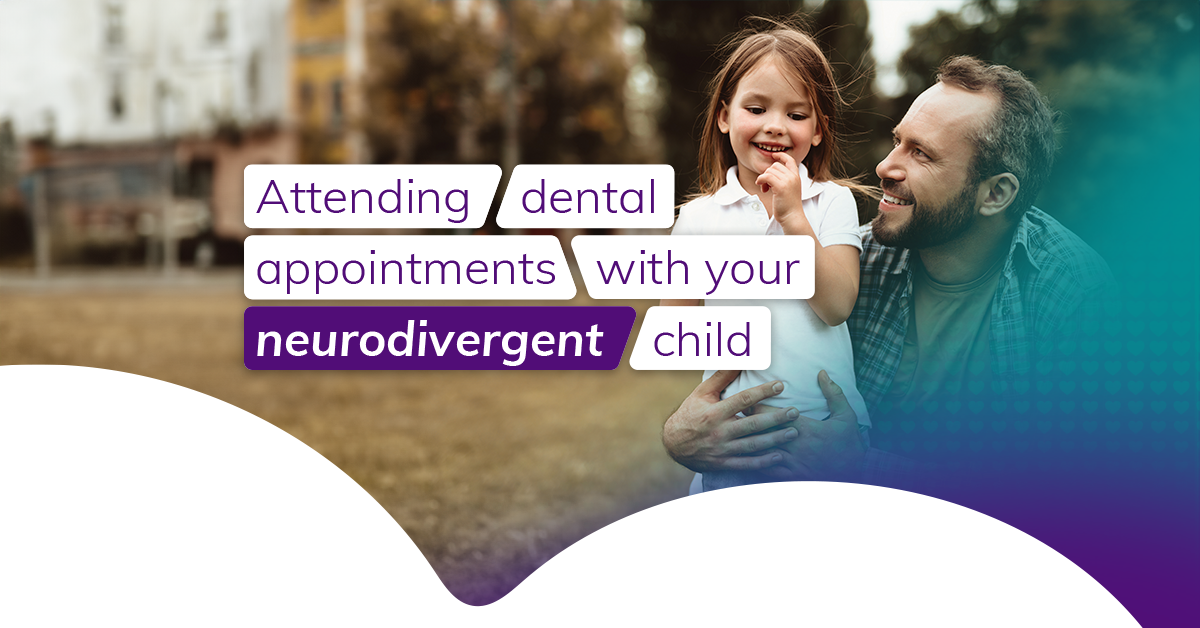

Understanding gingivitis and its treatment
Vhi Chief Dental Officer, Dr Gina Kilfeather, chats to us about early gum disease, known as gingivitis. She answers our questions about the cause gum disease, its risk factors, treatment, and symptoms. She also shares some key oral hygiene tips that you’ll find toward the end of the blog!
What is gingivitis and how does it develop?
Gingivitis is essentially gum disease. When you have gingivitis, your gums become red, swollen, and tender. They might bleed when you’re brushing your teeth or even bleed spontaneously (without you touching them). Gingivitis is caused by buildup of plaque (a film of bacteria) around your teeth and gum line. A poor oral health routine and smoking can lead to gingivitis. For instance, if you’re a smoker and sometimes skip brushing your teeth in the evening, plaque will build on your teeth and gums, potentially causing gingivitis.
Are some people more at risk for gingivitis?
People who are immunocompromised can develop gingivitis more easily because their immune system finds it harder to fight off infections and inflammation. If you’re pregnant, the change in hormones can also put you at a higher risk of gingivitis, so be sure to arrange a checkup with your dentist if your gums become swollen, red or bleed when you’re brushing. Other risks include certain medications ─ some can cause swollen gums, others cause dry mouth and either can make you more prone to gum disease. If your family has a history of gum disease, you are more susceptible because genetics can play a role too.
Can the type of food you eat cause gingivitis?
No, food doesn't cause gum disease in any way. Food can cause cavities in your teeth, but it doesn’t lead to gum disease directly.
What are the early signs and symptoms of gingivitis that people should look out for?
The main symptom to look out for is bleeding gums. You may experience bleeding when you're brushing and have swollen or tender gums. Your gums may appear red and puffy instead of pink and firm. If you are experiencing any of these symptoms, it’s recommended you see your dentist.
There are two types or stages of gum disease, the early stage (gingivitis) and periodontal disease, which is advanced gum disease. Gingivitis is more common, and the key difference is that it’s reversible. Gingivitis treatment is regular professional dental care and a regimented oral health routine at home. Keep in mind that gingivitis can recur if your oral health routine drops again.
What is the difference between gingivitis and periodontal disease?
Periodontal disease (also known as periodontitis) is a much more advanced form of gum disease. With periodontal disease, people may start to notice that their gums are receding or shrinking back from their teeth. The affected gums won’t grow back ─ the condition is manageable, but not curable. By manageable, I mean your dentist will do a deep cleaning to remove as much bacteria as possible and make a tailored oral health routine for at-home care. Then, they’ll look at any lifestyle factors that may be contributing, such as smoking or medications, and see if changes can be made there. Your dentist will book you in for regular check-ups monitor the condition. These steps won’t cure periodontal disease, but they can slow down its progression.
Any tips for an excellent oral health routine?
- Brush your teeth before breakfast, not after.
- Don’t rinse out your mouth after brushing your teeth. You want the toothpaste to stay in there and get to work!
- Mouthwash shouldn't be used within at least 20-30 minutes of brushing your teeth, because there are ingredients in mouthwash that will deactivate some of the ingredients in toothpaste.
- Certain mouthwashes (those containing chlorhexidine) can badly stain your teeth. It’s best to talk to your dentist about which one is best for you because they all come in different percentages of active ingredients.
- With these kinds of mouthwashes, you shouldn’t use them for more than two weeks or you risk staining to your teeth.
- Floss after brushing your teeth, not before.
- If you have active gum disease, brush your teeth before breakfast, then do your flossing and your interdental cleaning. Use your mouthwash 30 minutes to an hour later, and again around 4pm. Then brush your teeth again at nighttime and do your flossing and interdental cleaning again.
Gingivitis is totally reversable with sustained, basic oral health care. If you see any changes to your gums, particularly bleeding, arrange a check-up with your dentist to figure out your next steps.
Key takeaways:
- Gingivitis is a common and reversible form of gum disease. If left untreated, gingivitis can develop into periodontal disease, which is an advanced form of gum disease.
- Symptoms of gingivitis include red, swollen gums that bleed when brushing, sometimes even without brushing.
- You’re more at risk of developing gum disease if you have poor oral health, smoke, take certain medications, are pregnant, have diabetes, have a history of gum disease in your family, or are immunocompromised.
- Treatment for gingivitis includes dentist visits for cleans and checkups, and an improved oral health routine at home.
Dr Gina Kilfeather




